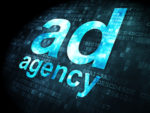 Amused, yes. Concerned, potentially. Shocked, no longer when it comes to the cavalier attitude exhibited by some in the digital media supply chain when it comes to an advertiser’s digital media investment.
Amused, yes. Concerned, potentially. Shocked, no longer when it comes to the cavalier attitude exhibited by some in the digital media supply chain when it comes to an advertiser’s digital media investment.
That said, I have been intrigued by the nuanced manner in which agencies, ad tech providers and publishers now address the topic of brand safety. Interestingly, many in the digital media supply chain have begun to differentiate between “brand safety” and “brand suitability.” Ultimately, marketers will have to weigh in on whether or not there is a difference and why they should give any provider relief when it comes to protecting the brands that they steward.
Recently, Integral Ad Science (IAS) released the results from a research study which they conducted that suggests that while approximately one-half of those surveyed understood that there was a difference between these two perspectives, 27% of the digital media buyers surveyed were unaware of the difference. To be fair, as defined, the differences are subtle to be sure. One deals with controls to mitigate potential damage to a brand’s reputation and the other with targeting parameters such as viewability and content adjacency.
Candidly, it is fair for marketers to ask the obvious question, “Why isn’t content adjacency considered a risk to brand safety? Why the need to segregate this important variable from overall brand safety efforts?” It would seem that the industry should view any threat to the integrity of a brand as a brand safety issue. The cynic in me can’t help but believe that parsing this issue, creating a sub-category for brand suitability is simply a way to mask the industry’s inability to determine where an advertiser’s digital ads are served and to maneuver around the enhanced controls and stricter guidelines that marketers have attempted to enact to protect their brands.
It should come as no surprise that industry participants cannot agree on whether or not the 4A’s Advertising Protection Bureau (APB) guidelines issued in 2018 are adequate or too restrictive… assuming they were even aware of the guidelines to begin with. This also helps to explain why only 9% of the IAS survey participants indicated that they were “very” satisfied with the digital ad industry’s overall efforts when it came to brand safety.
For a marketer, there is nothing more important than the sanctity of a brand, the relationship it enjoys with its customer base and the long-term value, which that represents to the organization. Any attempt to subjugate the topic of brand safety for the convenience of being able to scale a campaign, extend campaign reach or to enhance supply chain participant revenues, is simply not appropriate.
Questioning the efficacy of or the need for brand safety policies, whitelists, blacklists and or the money being invested by brand marketers to monitor ad placements and adherence to these guidelines comes across as extremely self-serving and contrary to the notion of brand safety. Brand safety should not be an either or proposition.
While progress has been made, the digital ad industry must be pressed by its advertising base to remain vigilant to protect the sanctity of their brands. When it comes to the philosophy of brand safety and the industry’s commitment to it, marketers cannot allow their supply chain partners to relax their standards on this front for any reason. The industry should never forget that it is the brand marketer that bears all of the risk when it comes to challenges to brand safety.









